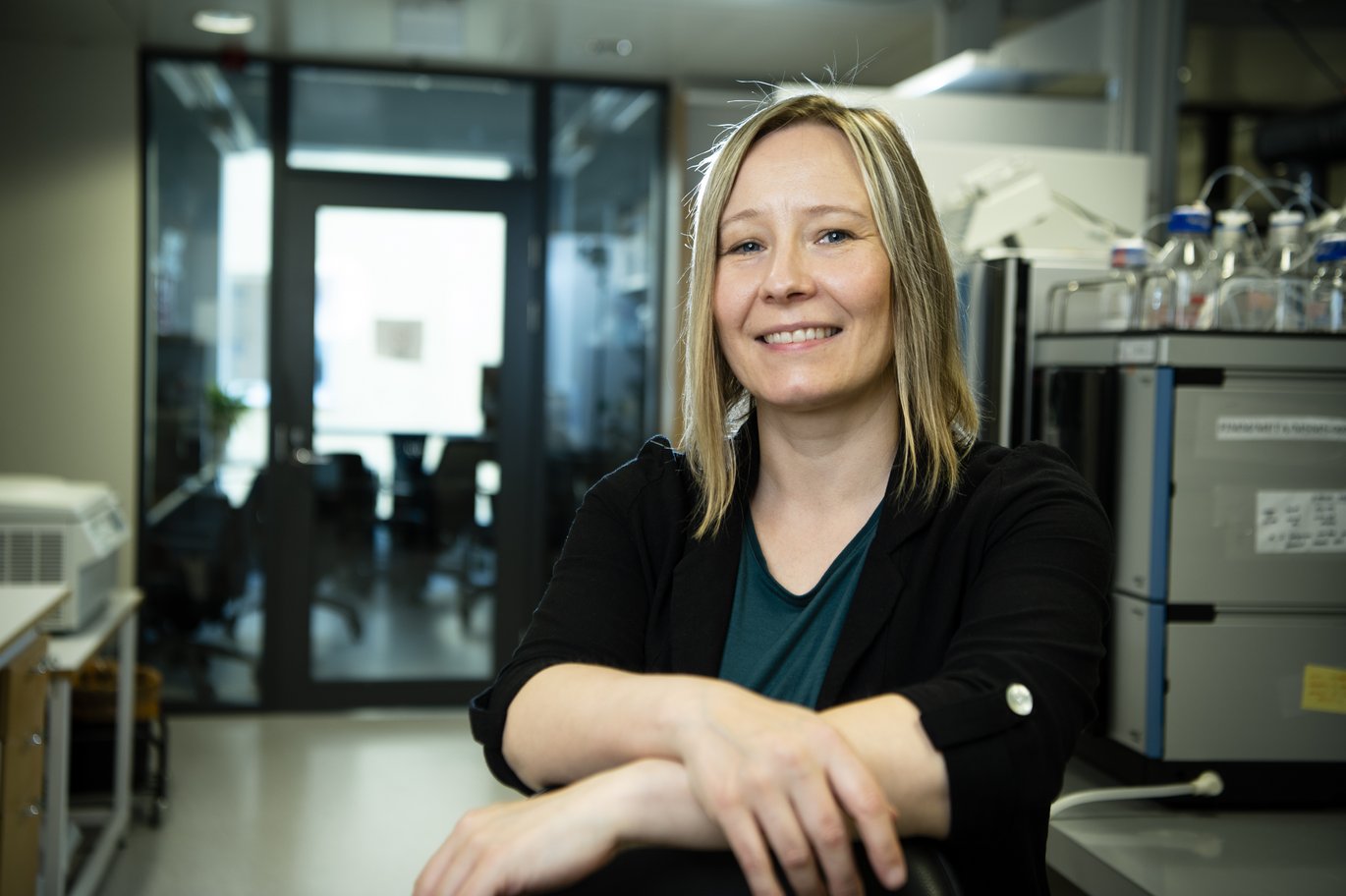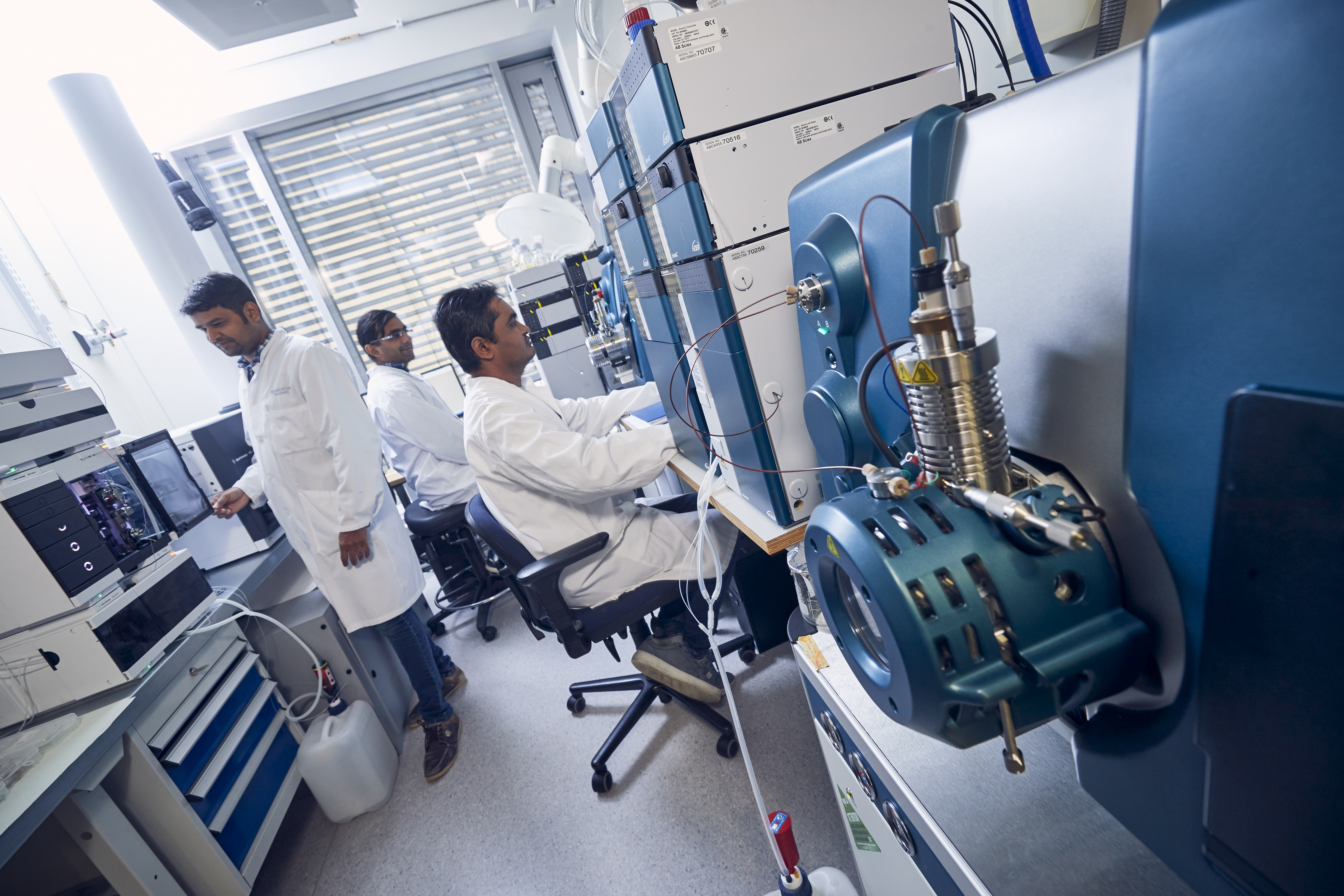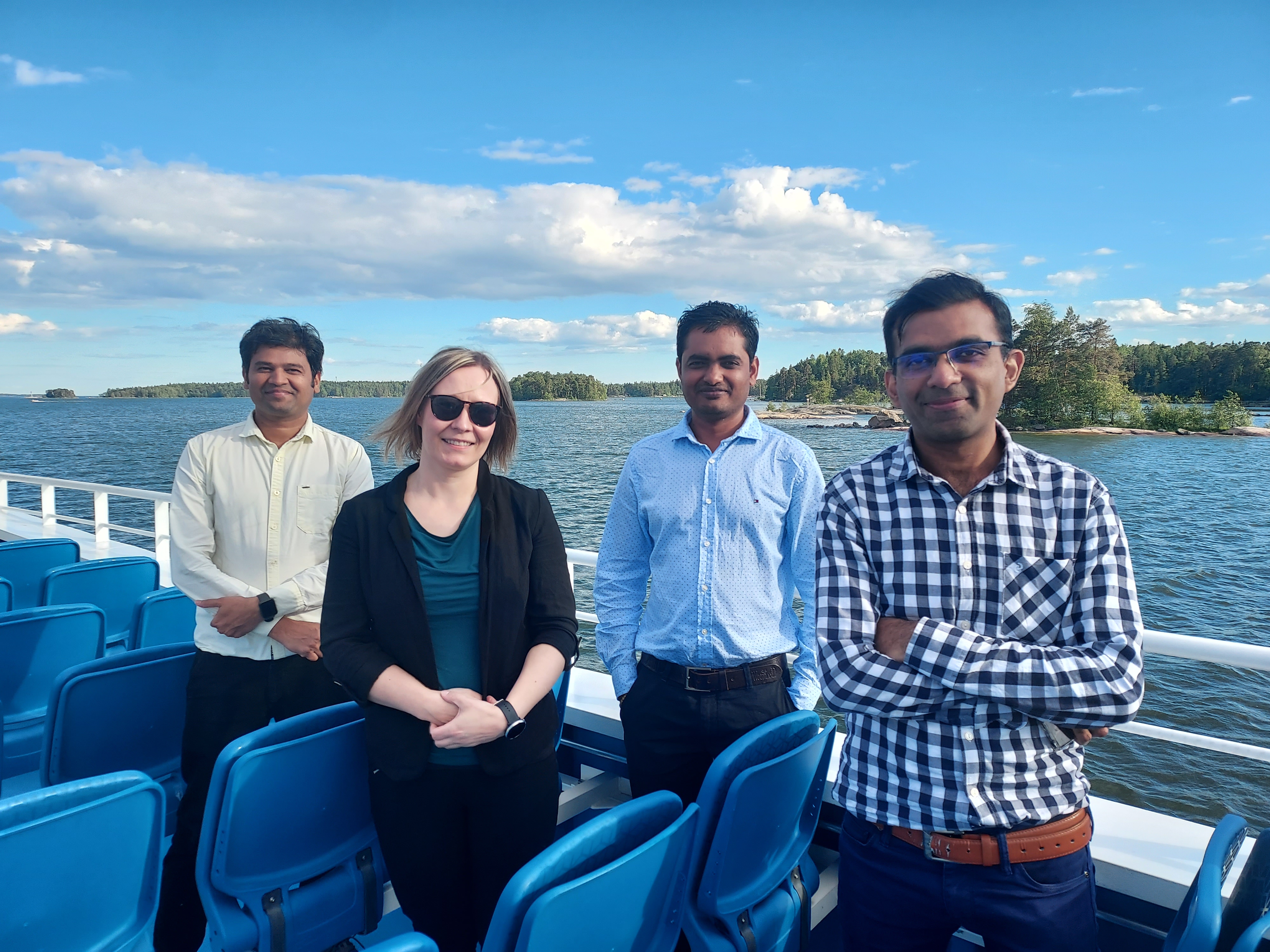FIMM Meta: Cooperating with researchers to answer their questions with metabolomics approaches
In this article, we meet FIMM’s Metabolomics Unit Manager, Anni Nieminen, and learn about the power of metabolomics and the core facility she directs at FIMM.



Searching for new biomarkers? Trying to determine how certain genes or nutrients affect disease? Or, are you looking to understand the phenotypes of a model organism or validate metabolic results?
Metabolomics could help you tackle these scientific challenges and more.
The FIMM Metabolomics Unit (FIMM Meta for short) offers academic and nonacademic researchers access to high-throughput mass spectrometry-based targeted and global metabolomics, lipidomics and fluxomics. Dr. Anni Nieminen heads the technology platform that provides services for clients internally at the University of Helsinki, nationally from all of the other universities in Finland and internationally.
From project design to data analysis
Dr. Nieminen and her international team of three highly experienced chemists provide metabolic analyses for research on any biological material, with a focus on human samples, and a venture into precision medicine for some projects. The team has a strong research and analytical background and uses these skills to consult with clients and design the best possible methods for each project, even before having the samples in hand. Dr. Nieminen explains:
Early-stage consultation has been of high interest recently, and really enables the highest quality of results. Metabolomics methods are often complex, and sometimes certain metabolites require quite a lot of know-how. So, together with clients, we can set up novel methods and handle challenging sample types, such as isolated primary cells or 3D cultures.
Dr. Nieminen reflects on how the team’s expertise fits together:
I think the combination of me being a molecular cell biologist working with analytical chemists allows us to get really good outcomes. We solve problems together. Importantly, our analyses are checked manually to monitor accuracy and reproducibility. This is one of our team’s strongest points - striving for the best quality data.
The high level of expertise needed for successful metabolomics projects highlights the importance of offering an organized technology platform and demonstrates the need for such a service. And, it’s not just preparing the samples and collecting the data that can be complex. The analysis of the data also presents a challenge for many researchers.
All of the ‘omics technologies have a data analysis side, which can be complicated for clients. When researchers get a service from us, they get the metabolic data. And then they have to either have the capacity to handle and analyze the data, or do so in collaboration with us.
Explains Dr. Nieminen. She continues:
We don’t yet have a dedicated bioinformatician in our team, but we aim to have one. In our team, I’m the one that serves in that role. Sometimes, I’ve even been contacted by PIs who’ve collected data elsewhere and ask for my help understanding and filtering their data to decide how to go forward.
At the forefront of the technology with fluxomics
Metabolomics provides static information about metabolites in a sample. While this is powerful information, metabolism is dynamic. For research that seeks answers about rates of reactions, fluxomics is the answer. Dr. Nieminen explains:
We also offer fluxomics, which traces metabolomics. For example, you can knock out or inhibit an enzyme of interest, and follow the direct effect of that on biochemical reactions in vivo. For example, you can inject non-radioactive, stable-isotope carbon-13-labeled nutrients into mice and follow the incorporation into different tissues. Or, you could use nitrogen-15 and follow nitrogen homeostasis in cells, under certain stressors.
The instrumentation needed for fluxomics is similar to that used for metabolomic profiling, but the knowledge is key. Dr. Nieminen brought this know-how to Finland after her postdoc and established the method locally both at FIMM and as part of the Center of Excellence in Stem Cell Metabolism, MetaStem at the University of Helsinki.
Collaborations in research and research infrastructure
The FIMM Meta platform collaborates with local and international partners in research projects as well as research infrastructure initiatives.
For example, an interdisciplinary, international collaboration on Parkinson’s disease engages Helsinki University Hospital (HUS) clinician Filip Scheperjans and European collaborators from Aarhus and Groningen University as part of an Academy of Finland-funded project. “In addition, several research groups from the Faculty of Medicine’s Research Programs Unit who are studying metabolism, such as the group led by Anu Wartiovaara, have ongoing collaborations with us,” explains Dr. Nieminen.
Being part of the Nordic EMBL Partnership means that new collaborations have been supported by a grant from NordForsk to bring Nordic researchers together, especially facilitating their access to research infrastructure. Dr. Nieminen explains how a new collaboration has emerged with this support:
We recently started working with MIMS (The Laboratory for Molecular Infection Medicine Sweden at Umeå University), thanks to funding from NordForsk. Björn Schröder and his group, studying gut microbiome, have been sending samples during the last year for the initial runs. The group is visiting here this month for a workshop to extend their understanding of the analysis.
FIMM Meta is also a part of Biocenter Finland and the HiLIFE Metabo platform at the University of Helsinki. Dr. Nieminen explains:
We work together with HiLIFE (Helsinki Institute of Life Sciences) core facilities, mainly the Viikki Metabolomics Unit (ViMU) and Helsinki Lipidomics Unit (HiLIPID). These have been really fruitful collaborations with many new developments. In fact, because I came to FIMM from the Viikki campus of the University of Helsinki, I have been able to build strong connections between these core units.
From cancer research to metabolomics expertise
Dr. Nieminen’s path to running the metabolomics platform at FIMM was a scientific one that began with doctoral studies and took her abroad for a visiting postdoctoral project. She explains:
I did my Master’s thesis and doctoral studies with Prof. Juha Klefström at the Faculty of Medicine, University of Helsinki. I was studying oncogene-driven programming of breast cancer. My project went into metabolism, and I wanted to look more at global metabolic reprogramming. At that time, this was very new.
Her interest in global metabolism took her to a postdoctoral position funded by a prestigious Academy of Finland Postdoctoral Fellowship in the research group led by Dr. Ville Hietakangas at the Institute of Biotechnology at the University of Helsinki.
During her postdoc, Dr. Nieminen had the opportunity to go abroad, fulfilling a long-time goal to garner knowledge to return to Finland with.
I was offered a visiting postdoctoral position in Karen Vousden’s lab. She's Cancer Research UK's Chief Scientist and a Group Leader at the Francis Crick Institute in London, but at that time, she was director of Cancer Research UK’s Beatson Institute at the University of Glasgow.
She continues:
With the researchers at Beatson, I worked closely with metabolomics, which was a new challenge for me. The rich environment there motivated me! I then continued the project in Finland, and in 2018, when funding was granted for the Center of Excellence in Stem Cell Metabolism, MetaStem, we could set up the instrumentation in Viikki.
After establishing the technology for the MetaStem Center of Excellence, in 2020 Dr. Nieminen accepted the position to head the FIMM Meta Unit. Her goal was to combine metabolomics method development in a service-oriented role with leading research projects. She currently has a project on liver cancer with surgeon Heikki Mäkisalo and pathologist Sonja Boyd from HUS. Reflecting on her experience at FIMM so far, she states, “I really enjoy FIMM as a working environment, and even though we’ve been working remotely since I first joined, I can say that it's a really collaborative environment, something I appreciate.”
Facing the challenges and finding the meaning
Metabolomics doesn't have limits. And that actually creates a basic challenge. Dr. Nieminen explains:
In general, metabolomics is complex. It combines different fields, and that’s why it’s so intriguing. However, you have to be able to set limits, e.g., with the metabolites in patient studies - something concrete that you can draw conclusions on. But what is very interesting to me are the metabolic pathways and understanding the meaning of the data. I enjoy combining this knowledge. I can map all the pieces to be able to explain outcomes.
Heading a research infrastructure platform is a challenging, multi-faceted role. There is managing the project and client portfolio and ongoing collaborations, the team, the instrumentation, the methods, teaching and workshops, and more. But Dr. Nieminen is comfortable in these busy shoes: “I especially like this position because it's so complex. As a team leader of a core facility, you can combine research with various other tasks like developing new methods, teaching students, and much more.”
Dr. Nieminen also considers the challenge of how advances in metabolomics can be applied to the clinic for the benefit of diagnosis or health and treatment monitoring:
We're still lacking proper regulatory guidelines for clinical research and application of metabolomics. First of all, metabolomics has accuracy and reproducibility issues that other ‘omics platforms don't have to this level. I'm involved in EATRIS, the European infrastructure for translational science, where we are aiming to prepare such EU-wide guidelines applicable for all metabolomics core facilities.
More specifically:
Hospital labs measure metabolites all the time, but the ‘omics side is when you globally analyze metabolites. Global profiling for clinical use may not always be the best option. I prefer a semi-global, targeted approach because for clinical work you need absolute concentrations, which is very costly. When profiling, you measure relative levels, which is faster and efficient, and good for finding new biomarkers. But when you go to actually measure something from one patient, that has to be quantitative.
Dr. Nieminen sees a lot of meaning in her work and career so far. As a young scientist she enjoyed solving challenging tasks and puzzles, something she's still doing today. But she has found some answers in her accomplishments so far:
First, being able to combine my molecular cancer biology background with the liquid chromatography, mass spectrometry area is a great achievement for me. I was able to set up the fluxomics method in Finland and the collaborations with this method have now been published in Nature Cell Biology and Nature Biotechnology. And, I’ve done my best to combine motherhood and a scientific career - something that is often forgotten but influences career paths!
Metabolomics for your research project
FIMM Meta, the Metabolomics Unit at the Institute for Molecular Medicine Finland within HiLIFE at the University of Helsinki offers access to expertise, instrumentation and services for targeted and global metabolomics, lipidomics and fluxomics for basic biomedical, preclinical and clinical research projects, nationally and internationally.
The full-service unit employs highly-qualified chemists, Ramji Rathod, Kenneth Nazir and Bharat Gajera, to analyze samples by mass spectrometry and to support the resulting data analysis through one-on-one consultation as well as workshops. It is also possible to process test samples before hiring full services, enabling the best quality data as an outcome.
Dr. Nieminen emphasizes that, “together with our experts in a project consultation, clients can design their own targeted set of metabolites to follow. It can have one, two, or even 100. With a well-designed, targeted metabolomics approach, you will find the key answers to your question.”
New clients are invited to contact Dr. Nieminen at anni.nieminen@helsinki.fi. Experienced users can order services directly through iLab on the FIMM Meta website. Mobility funding from a NordForsk Infrastructure Hub grant may help cover costs for visits to the facility for researchers affiliated with Nordic EMBL Partnership institutes. Please contact your local administration for more information.
Stay tuned to the FIMM and HiLIFE websites for more information on the upcoming lipidomics symposium in the autumn of 2022 in Helsinki. Follow the platform on Twitter @Metabo_HiLIFE.
The “Technologies Advancing Molecular Medicine” series highlights the people and activities in research technologies and core facilities in the Nordic EMBL Partnership for Molecular Medicine.
CONTACT
Anni Nieminen
Senior Scientist, Head of the Unit
anni.nieminen@helsinki.fi